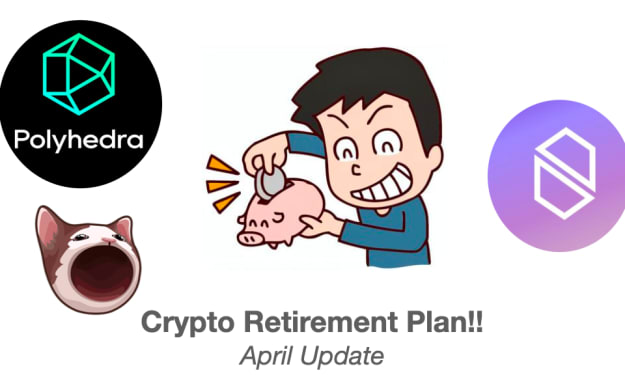Launch Your Own NFT Marketplace: A Step-by-Step Guide!
Are you ready to dive into the exciting world of NFTs? This comprehensive step-by-step guide will walk you through the process of creating and launching your very own NFT marketplace, empowering you to become a part of the digital art revolution.

Introduction
In recent years, the world of digital art has witnessed a groundbreaking revolution with the emergence of Non-Fungible Tokens (NFTs). These unique digital assets have transformed the way artists and creators monetize and distribute their work. If you're an artist, collector, or entrepreneur looking to tap into this exciting space, launching your own NFT marketplace can be a lucrative endeavour.
This article will guide you through the process of creating and launching your own NFT marketplace, empowering you to showcase and sell digital art in the booming NFT ecosystem.
Understanding NFTs: A Brief Overview
Before diving into the process of launching an NFT marketplace, it's essential to understand the fundamentals of Non-Fungible Tokens. NFTs are unique digital assets that utilize blockchain technology to certify ownership and authenticity. Unlike cryptocurrencies such as Bitcoin or Ethereum, which are interchangeable, NFTs represent one-of-a-kind items, including artwork, music, collectibles, virtual real estate, and more.
Researching Existing NFT Marketplaces
To gain insights and inspiration, it's crucial to research existing NFT marketplaces. Explore platforms like OpenSea, Rarible, and SuperRare to understand their features, user experience, and monetization models. Analyze their strengths and weaknesses to identify opportunities for differentiation in your own marketplace.
Defining Your Niche and Unique Selling Proposition
With the growing competition in the NFT market, defining a niche and unique selling proposition is vital. Consider specializing in a particular art style, genre, or community to attract a specific audience. Differentiate your marketplace by offering curated collections, exclusive artist collaborations, or innovative features that enhance the user experience.
Choosing the Right Blockchain Platform
Selecting the appropriate blockchain platform is a critical decision for your NFT marketplace. Ethereum is the most widely adopted platform for NFTs, but high transaction fees and scalability concerns may lead you to explore alternative blockchains like Binance Smart Chain, Flow, or Tezos. Assess the pros and cons of each platform to make an informed choice.
Setting Up the Technical Infrastructure
To launch your NFT marketplace, you'll need to set up the technical infrastructure. This involves developing or customizing smart contracts, establishing a decentralized storage solution for hosting digital assets, and integrating blockchain APIs for seamless transactions and metadata retrieval.
Designing an Engaging User Interface
A captivating user interface is crucial for attracting and retaining users. Invest in intuitive design principles, appealing visuals, and user-friendly navigation. Focus on creating an immersive and aesthetically pleasing experience that allows artists to showcase their work effectively.
Implementing Secure Smart Contracts
Smart contracts play a vital role in the NFT ecosystem, ensuring secure and transparent transactions. Collaborate with experienced blockchain developers to implement smart contracts that handle the minting, buying, selling, and royalties distribution of NFTs. Conduct thorough testing and auditing to identify and mitigate any potential vulnerabilities.
Developing Robust Payment and Transaction Systems
Smooth and reliable payment and transaction systems are essential for the success of your NFT marketplace. Integrate popular cryptocurrencies like Ethereum or stablecoins as payment options. Implement secure and efficient transaction processes, including escrow services to protect both buyers and sellers.
Establishing Community Governance and Moderation
Fostering a strong and engaged community is vital for the growth of your NFT marketplace. Implement community governance mechanisms such as voting systems or decentralized autonomous organizations (DAOs) to involve users in decision-making processes. Set up moderation systems to ensure content quality and prevent fraudulent or inappropriate listings.
Launching and Promoting Your NFT Marketplace
When you're ready to launch your NFT marketplace, create a buzz around your platform. Leverage social media, influencers, and targeted marketing campaigns to reach artists, collectors, and enthusiasts. Collaborate with artists to onboard them to your platform and showcase their work during the launch.
Embracing Feedback and Iterating
Listen to feedback from your early adopters and continuously iterate and improve your NFT marketplace. Regularly update and add new features based on user suggestions and market trends. Engage with your community through forums, social media, and support channels to build trust and loyalty.
Scaling Your Marketplace for Growth
As your NFT marketplace gains traction, scalability becomes crucial. Optimize your technical infrastructure to handle increased traffic and transactions. Explore layer 2 solutions or sidechains to alleviate scalability issues and reduce costs. Collaborate with blockchain scalability experts to ensure a seamless user experience.
Ensuring Security and Trust
Security should be a top priority for your NFT marketplace. Implement robust security measures to safeguard user data, digital assets, and transactional information. Conduct regular security audits, employ encryption protocols, and educate users about best security practices to build trust and credibility.
Collaborating with Artists and Creators
Forge strong relationships with artists and creators to attract high-quality content to your NFT marketplace. Offer incentives such as competitive commission rates, exclusive features, or promotional opportunities. Actively engage with artists, provide support, and highlight their success stories to foster a vibrant and thriving artist community.
Exploring Future Opportunities and Trends
Stay ahead of the curve by keeping an eye on emerging trends and opportunities in the NFT space. Explore the integration of augmented reality (AR) or virtual reality (VR) technologies into your marketplace. Consider innovative features like fractional ownership or gamification to enhance user engagement and monetization possibilities further.
Conclusion
Launching your own NFT marketplace opens up a world of opportunities for artists, collectors, and entrepreneurs. By following the steps outlined in this guide, you can create a unique, engaging, and successful NFT marketplace that caters to the growing demand for digital art. Embrace the power of blockchain technology, foster a vibrant community, and continuously innovate to stay relevant in this exciting ecosystem.
About the Creator
scottmacyy
I am a blockchain engineer with extensive experience creating Web3 business applications for ventures.






Comments
There are no comments for this story
Be the first to respond and start the conversation.